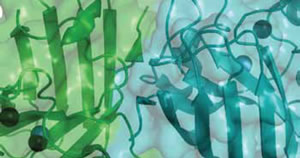Wednesday, November 25, 2009
Brain-Like Chip
"Brain-Like Chip May Solve Computers' Big Problem: Energy. The future of computing may depend on embracing the chaos that defines human thinking". Full article @ discover.com.


Labels: biomimetics, computation, natural computing
Tuesday, November 24, 2009
Gene hunters
"Søren Brunak at the Technical University of Denmark and Kasper Lage, now at the Broad Institute in Boston, developed a computational method to predict which proteins most likely cause a particular disease. [...] This study was one of the first to use computational methods to predict a gene–phenotype relationship." article @ TheScientist.com.

K. Lage et al., “A human phenome-interactome network of protein complexes implicated in genetic disorders,” Nat Biotech, 25: 309–316, 2007.

K. Lage et al., “A human phenome-interactome network of protein complexes implicated in genetic disorders,” Nat Biotech, 25: 309–316, 2007.
Labels: computational biology, disease, genetics, genomics, proteomics
Monday, November 23, 2009
Swarm Chemistry
"Swarm Chemistry" is the pilot research project run by Hiroki Sayama in the Department of Bioengineering at Binghamton University, as well as the interactive simulation software developed and used for the project.
We study the collective dynamics of heterogeneous self-propelled particle swarms and develop novel methods of decentralized control and interactive design of self-organizing decentralized systems. Swarm agents steer their motion according to a set of simple kinetic rules, similar to those in Craig Reynolds' "Boids". Each agent in our model has its own kinetic parameters that may be different from others, so that we can mix several different types of swarm agents into a single population and see how they kinetically react and form a dynamic pattern.
We study the collective dynamics of heterogeneous self-propelled particle swarms and develop novel methods of decentralized control and interactive design of self-organizing decentralized systems. Swarm agents steer their motion according to a set of simple kinetic rules, similar to those in Craig Reynolds' "Boids". Each agent in our model has its own kinetic parameters that may be different from others, so that we can mix several different types of swarm agents into a single population and see how they kinetically react and form a dynamic pattern.
Labels: Artificial Life, simulation, Swarms
Thursday, November 12, 2009
molecular basis of language and human evolution?
"The FOXP2 gene is implicated in the development of human speech and language. A comparison of the human and chimpanzee FOXP2 proteins highlights the differences in function in the two species." Full article @ Nature.com.


Labels: dna, evolution, genetics, natural language
“speed limit” of DNA polymerase
DNA polymerase enzymes that are responsible for DNA replication can work faster than previously thought. Full paper @ PNAS.


Labels: dna, replication

